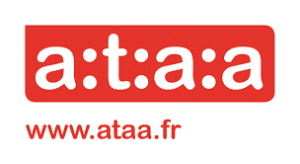
Hi, I am Sevita Caseres, I am from Switzerland! I am currently doing a doctoral thesis at University College Cork, Ireland, on French subtitling practices. I am interested in all aspects related to the subtitling process. I am also a French teacher and Assistant Lecturer in Translation studies.
My research interests
Today I will share a bit about a fascinating experience of exchange I had with French professional subtitlers. Before starting my PhD, I had studied translation for five years, including writing my master’s dissertation on audiovisual translation. I had also worked as a marketing translator. I had a long-standing interest in audiovisual translation, and more specifically in subtitling, which started from my addiction to TV series. I realised that despite having learned and practiced the art of translation for many years, I did not really know much about the industry in which my favourite content was translated. I wanted to find out more about how shows and movies are translated and to understand all the processes that take place before we can be binge-watch our favourite content.
I was interested in observing how professional subtitling really takes place to delineate how subtitlers in different production networks work and communicate, by comparing practices and processes. I wanted to share this information with all types of audiences, to give a voice and visibility to subtitlers and bridge the gap between industry and academia. I also aimed to highlight the importance of the subtitlers’ work, which allows viewers from different backgrounds to break linguistic boundaries and enjoy foreign content. To understand how the subtitling industry works, I carried out interviews and observations with seven English into French professional subtitlers in Paris between February 2021 and January 2022. I moved there in January 2021 to do an exchange semester at Université Sorbonne Nouvelle – Paris 3, with the idea of being on the field to allow for an easier data collection. But in the midst of the Covid-19 pandemic, this experience has not always been easy. Many health restrictions were in place at the time, including lockdown and a very severe curfew in France. Despite these difficulties, this experience has really been enriching and deserves to be shared.
Finding participants
 I recruited the subtitlers mostly through the French association for audiovisual subtitlers ATAA (Association des Traducteurs/Adaptateurs de l’Audiovisuel), but also through social media. I started by sending out an email to the association explaining my project and my goals. They shared my research with their community and shortly after this email, two subtitlers expressed their interest. They were my first participants in the research. One participant recommended three colleagues and later one of them became my third participant.
I recruited the subtitlers mostly through the French association for audiovisual subtitlers ATAA (Association des Traducteurs/Adaptateurs de l’Audiovisuel), but also through social media. I started by sending out an email to the association explaining my project and my goals. They shared my research with their community and shortly after this email, two subtitlers expressed their interest. They were my first participants in the research. One participant recommended three colleagues and later one of them became my third participant.
This aspect of community amongst French subtitlers was my first really interesting discovery. I found out that they use Facebook groups and Discord channels to contact colleagues and ask all types of questions. I joined some of the Facebook groups to recruit participants and noticed that French subtitlers discuss a range of different topics on these groups. These include for example questions on specific vocabulary for a translation, administrative issues such as filling out their tax declaration as freelancers, but also organisation of events to get together, and discussions about rates for their services. It raised my interest in studying how subtitlers communicate and collaborate with each other, but also with other stakeholders in the industry, which became a central element in my research. I also used the annuary available on the association’s website to contact individually subtitlers who seemed to work in Paris and on the type of projects I was looking for. I ended up finding four additional participants.
From the individual emails I sent, I received 58 replies of translators who were mostly encouraging but could not participate in the research as they did not live in Paris, or had moved out of the city, were busy with other projects, or on the contrary did not have any projects at the moment. The pandemic had slowed down a lot of their activity. The difficulties that this uncertain situation created had encouraged some professionals to leave the capital for the countryside or other cities. Despite some replies of translators who just did not wish to be observed, most of them were interested in my work even if they could not participate and said that they would be happy to stay in touch and reply to any questions. I had a very good contact with most subtitlers, which encouraged me to continue my work as it showed that they were eager to share information about their profession.
How did my observation actually take place?
In the design of my research, I had carefully planned all ethical aspects before starting my data collection. For example, all data and information about the subtitlers were anonymised to avoid the risk for them to be recognised. All participants had also been informed about the methods through an information and consent form they signed and sent me back via email before the observation day.

After this, I organised the interviews with each subtitler to ensure that I arrived 30 min prior to their workday to avoid disturbing their schedule. I started each day by doing an introductory interview with each subtitler over coffee to make them feel comfortable. In this interview I wanted to learn more about their background and their past and future projects to have a clearer idea of demographic and technical aspects in their professional life. After this, I spent the entire workday with each subtitler, shadowing them in a non-participant observation. I sat behind them where I could see the screen and took notes on my laptop. They shared most steps of their workday with me – I had lunch with them and discussed all kind of topics with them over breaks. This represented for me the most fascinating immersive experience I could have asked for, as I got to live a day in the life of a subtitler (and it really made me want to be a practitioner myself!). At the end of their workday, I carried out a retrospective interview to discuss what I had observed during the day. In this interview, I asked questions related to their practices and had a debriefing chat to finish the day. An aspect that came out frequently from the retrospective discussion was that the subtitlers were happy to share about their profession, because they were passionate about their job and eager to share their passion. Both interviews were recorded using two phones and I later transcribed them.

During the interviews, when I asked the subtitlers about collaboration and communication with peers, most of them told me that ATAA represented a community for them and that they regularly exchanged with colleagues from the association as well as sometimes with experts of specific fields to help them in their translations. They also shared about how the French subtitling industry works nowadays, who is involved in the process, and the particularity of the authorship status in France for audiovisual translators. They were also able to share concerns, such as reduction in wages, the emergence of bad practices in subtitling, and they appreciated the fact that I was there to collect their opinion and to give them visibility.
When I asked the subtitlers how they felt about the observations, the first said that my presence did not bother him: “you did not intervene at all, which was very good”. A second participant also stated that this was a positive experience for her: “I was more assiduous than usual. I usually tend to procrastinate and take more breaks”. This was also mentioned by another participant: “this was very good, I realised that it actually stimulates me to be observed”. These subtitlers really encouraged me to pursue my research and insisted on the importance of studying the field. As one participant stated, “this is innovative as much in practice as in academia, because no academic ever came to sit with a subtitler in a room for a day to see what they concretely did, and I find it necessary to do so”.
This real-life insight into the profession that I obtained by spending a day observing subtitlers has been invaluable for me in terms of findings. Despite just having a glimpse into their process, this allowed me to familiarise myself with their thinking process, their habits and methods in a way that would not have been possible otherwise. For example, I took notes on aspects related to their workspace – some subtitlers liked to work on a laptop in their living room and others preferred a separate office with a desktop, some of them liked to work with a headset and others not. I also kept records of interesting habits related to translation – such as the use of online glossaries and dictionaries or paper resources, their preferred software and the format in which they received and processed the materials to translate. I also observed the fact that some subtitlers used specific cloud-based software for specific clients. Through this direct observation, I obtained additional information on their daily routines and work habits – some of them preferred to work at night and others early in the morning. While some took notes on Word files, other preferred to take notes on paper. Some liked to work standing and walking around when thinking and others enjoyed ergonomic chairs or taking a quick walk outside to think. All these aspects and many more form part of the creative process of translation. I was really fascinated by all the strategies they put in place to produce translations for the content we watch daily. I look forward to sharing my results to show more about what they do in this profession, and how important their work is in the cultural industry.
In my next post, I will share more about the concrete results of this research. Stay tuned!

Hi Sevita,
Thanks for sharing your data collection process with us